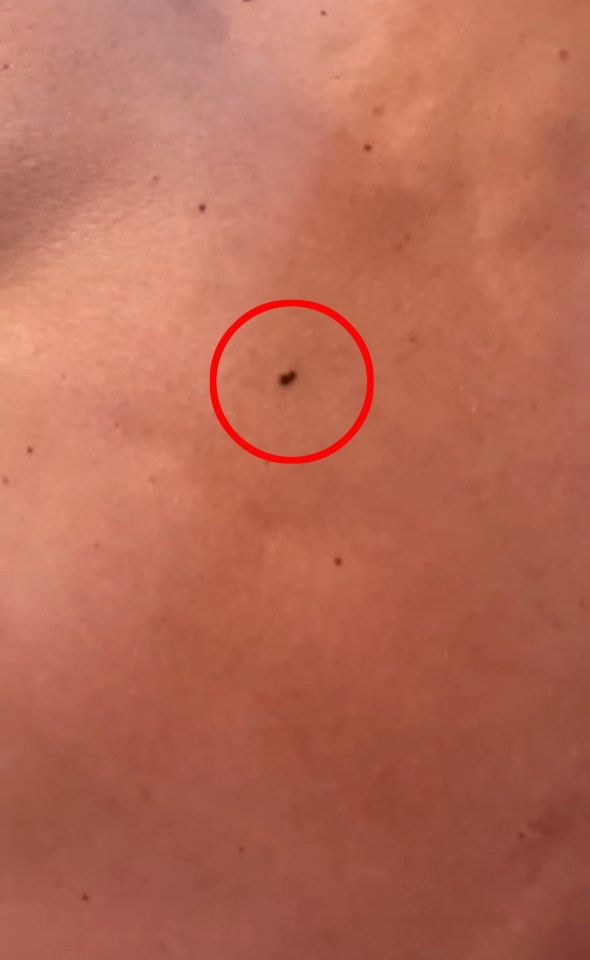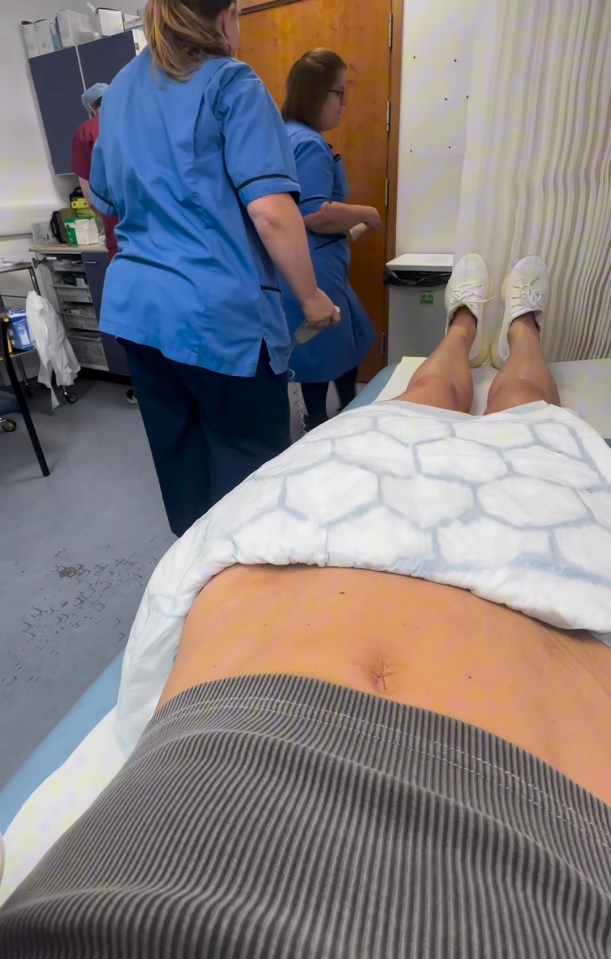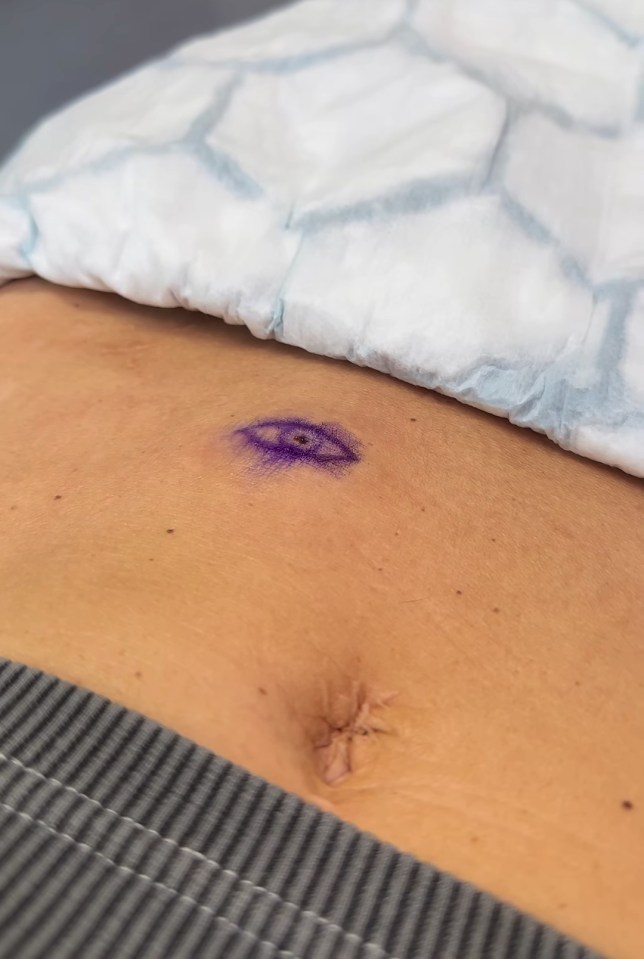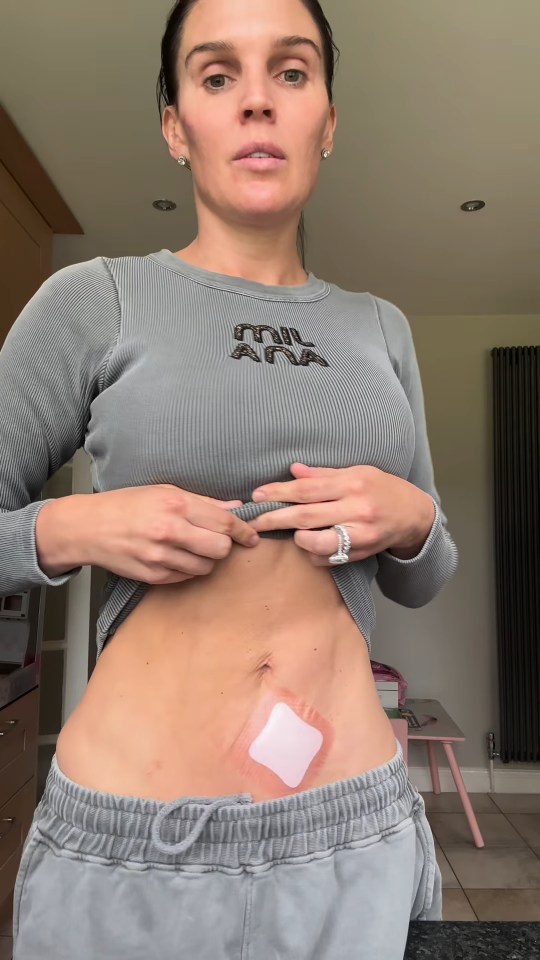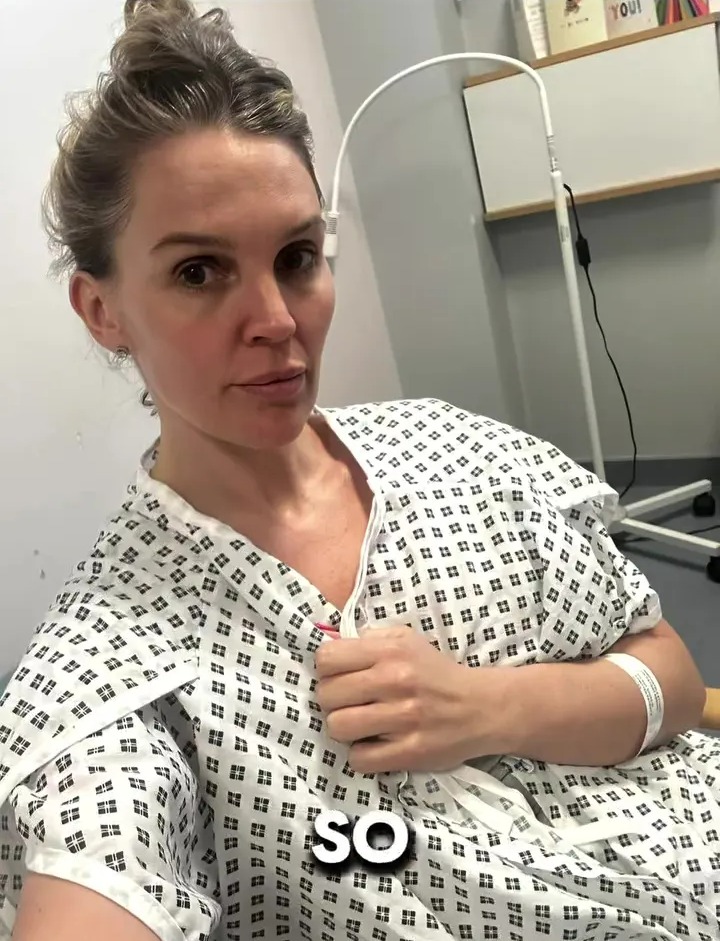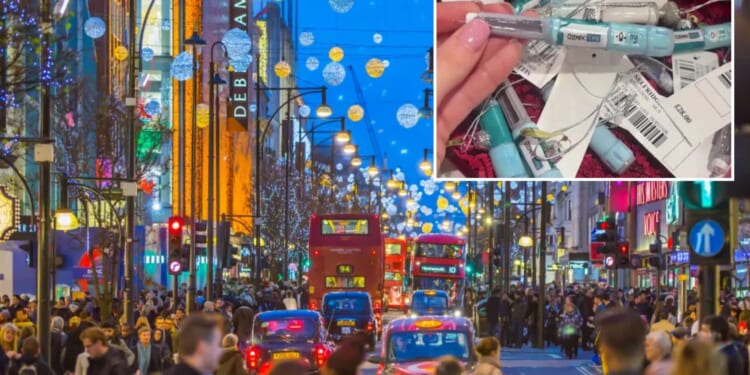DANIELLE Lloyd revealed she was back in hospital to remove another mole after her recent skin cancer battle.
The model, 41, was diagnosed with melanoma in February and had the suspicious mole near her collarbone removed earlier this year.
Danielle, who is now cancer-free, was not taking any chances and had a biopsy on another unusual mole on her stomach on Tuesday.
The star shared a photo of the mole in question and snaps of her on the bed ahead of the minor surgery procedure.
She wrote: “It only looks small but it’s definitely changed in colour and size.”
Documenting her time in hospital, she said: “I was a little bit apprehensive when I was waiting but then I was absolutely fine going in.’
READ MORE ON DANIELLE LLOYD
She then shared a picture of the mole following the op with stitches in place.
Danielle continued: “When I got home I was a little bit sore and a little bit swollen but overall I’m just looking forward to getting some positive results.”
The mum-of-five described the experience as quick and painless but said she would now have a two month wait until she gets the results.
She then urged her followers to beware of their changing moles and to continue to protect yourself with SPF.
She added: “Trigger Warning. Today I had another surgery to remove another mole — this time on my stomach.
“We’re hoping it’s just a precaution, but I’ll be waiting 8–10 weeks for results.
“Please don’t ignore any changes to your skin. I never thought this would happen to me… until it did.
“Early detection saves lives — skin cancer is highly treatable when caught early.
“If something doesn’t look or feel right, see a doctor.
“Protect your skin: Use high SPF. Cover up. Say no to sunbeds. Look after yourself and those around you.”
Danielle’s sunscreen warning comes after ex Towie star Sam Faiers sparked outrage after she revealed her kids never use sunscreen.
Samantha was forced to fit back and said she is not a medical expert but said she believes SPF is “pretty harmful and full of toxic ingredients”, adding that her family has “built a tolerance” to the sun.
Her response baffled followers and experts alike.
One follower responded: “You need to delete your story about not wearing sunscreen, I don’t think you understand the damage you can do to your followers by promoting this.”
Meanwhile, Bruce Green, chartered chemist, scientist and founder of SOS Serum Skincare, says there is “no such thing as ‘building tolerance’ to UV rays”.
“Skin damage from UV exposure is cumulative and largely irreversible,” he stressed.
SCARY ORDEAL
In May, Danielle told The Sun: ” Being a mum, I was trying to put a brave face on for everyone, but inside I’ve been crumbling.
“I was worried every single day that I was going to die.“
In February Danielle shared graphic photos alongside a candid health update to raise awareness of skin cancer – admitting her own patch was smaller than a 5p coin.
She had an operation to remove a cancerous patch from just above her collarbone, after spotting a change in a small freckle.
She admitted she rarely wore sunscreen with a high SPF, saying: “Honestly, if I did, it was very low factor as I go so brown very quickly. I never thought my skin tone could get skin cancer and if I did anyone can”.
The mum also said she had ditched sunbeds for the first time in her life.
Danielle previously explained she only noticed the difference after looking back at old holiday photos, where the mark appeared noticeably darker and had changed in shape.
The TV personality said she was “really shocked” to receive the news and would need to have an operation to determine if it has spread.
What is melanoma, what are the symptoms and how can you prevent it?
Melanoma is the most serious type of skin cancer that has a tendency to spread around the body.
It is diagnosed 16,000 times per year, and tragically takes the lives of 2,340 people per year.
The number of people being diagnosed with melanoma is increasing, and it is the 5th most common cancer in the UK.
But it is also one of the most preventable cancers, with 86 per cent of cases in the UK avoidable.
The best way to protect yourself from melanoma is to be sun safe – wear SPF every day, wear a hat and sunglasses and keep out of the sun in the hottest hours. It is also advised to avoid sunbeds.
People who are fair-skinned, have blue or green eyes, blonde or red hair and a large number of freckles or moles are more likely to get skin cancer.
Surgery is the main treatment for melanoma, particularly if it is found early. This will involve removing the affected tissue in the skin.
Radiotherapy, medicines and chemotherapy are also sometimes used to try and stop the cancer from growing. Treatment depends on the severity of the disease.
What are the symptoms?
The key thing to look out for are changes to an existing mole, or a new mole on your skin.
Most experts recommend using the simple “ABCDE” rule to look for symptoms of melanoma skin cancer, which can appear anywhere on the body.
There are five letters/words to remember:
- Asymmetrical – melanomas usually have two very different halves and are an irregular shape
- Border – melanomas usually have a notched or ragged border
- Colours – melanomas will usually be a mix of two or more colours
- Diameter – most melanomas are usually larger than 6mm in diameter
- Enlargement or elevation – a mole that changes size over time is more likely to be a melanoma
A mole that changes size, shape or colour may be a melanoma.
But other signs to look out for include moles that are:
- Swollen and sore
- Bleeding
- Itchy
- Crusty
How deadly is it?
Melanoma is a deadly form of skin cancer.
The outlook of a person’s disease depends on the stage of the cancer when it was diagnosed.
Survival is better for women than it is for men.
“We don’t know exactly why this is. It may be because women are more likely to see a doctor about their melanoma at an earlier stage,” says Cancer Research UK.
The charity says that generally, statistics show that in England, more than 85 out of every 100 people (more than 85 per cent) will survive their melanoma for 10 years or more after they are diagnosed.
- Around 100 per cent in England diagnosed with melanoma at stage 1 – when the cancer cells are only in the top layer of skin – will survive for five years or more after diagnosis.This drops to 80 per cent for stage 2.
- Some 70 per cent live for a further five years when they are diagnosed in stage 3, which is when the cancer has started to spread to nearby lymph nodes.
- At stage 4, when the melanoma has spread elsewhere in the body, almost 30 per cent survive their cancer for 5 years or more.
Cancer Research says the stage 4 data does not account for age differences. Age can affect outlook and younger people have a better prognosis than older people.
Age can affect outlook and younger people have a better prognosis than older people.
What is melanoma?
Melanocytes are cells in the skin that give us the colour of our skin because they produce a pigment, known as melanin.
When you sit in the sun, melanocytes produce more pigment (a sun tan), which spreads to other skin cells to protect them from the sun’s rays.
But melanocytes are also where cancer starts.
Too much UV causes sunburn, and this is a sign of damage to the skin’s DNA.
The UV triggers changes in the melanocytes, which makes the genetic material become faulty and cause abnormal cell growth.
People who burn easily are more at risk of skin cancer because their cells do not produce as much pigment to protect their skin.
Those with albinism are at the most risk because their skin produces no pigment at all.
Danielle said the Macmillan nurses at the hospital had “really supported” her after being “shocked” by the health news.
She added: “Just honestly, not what I expected today. And I suppose not what anyone expects.
“But please guys look after your skin. Stay off sunbeds, wear factor 50. Just look after yourself because honestly you never know what’s going to happen.”
The appearance of a lump or discoloured patch on the skin that continues to persist after a few weeks can be a sign of a form of skin cancer according to the NHS website.
A new mole or a change in an existing mole may also be signs of skin cancer.
Danielle rose to prominence as a beauty queen who was crowned Miss England 2004 and later Miss Great Britain 2006.



